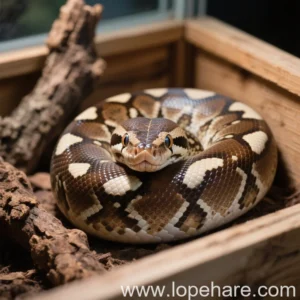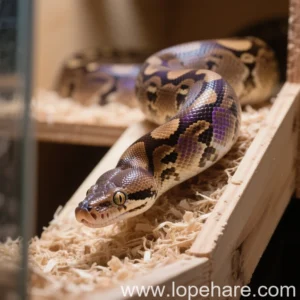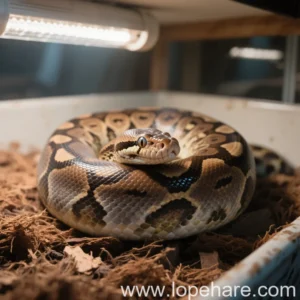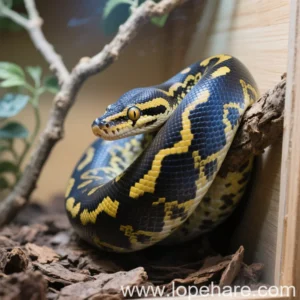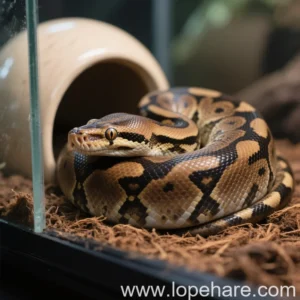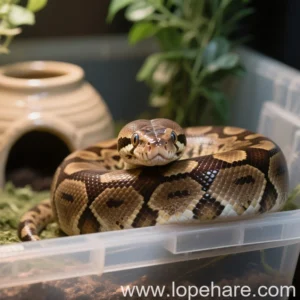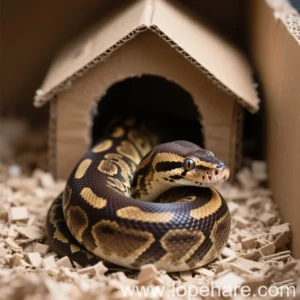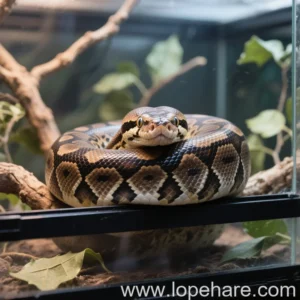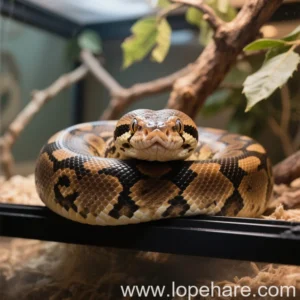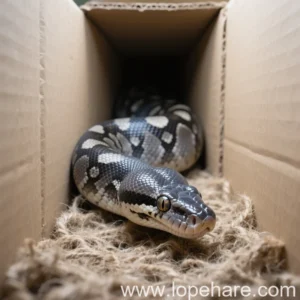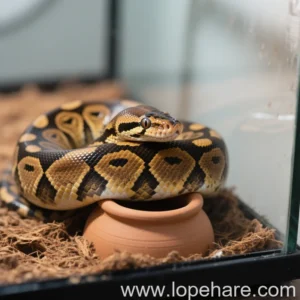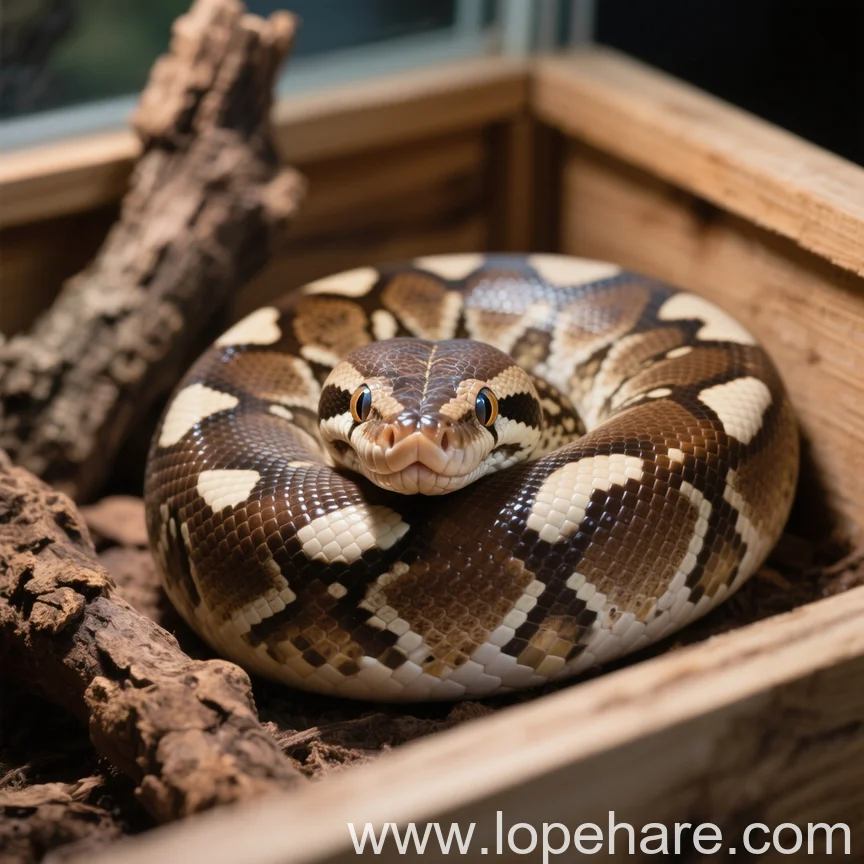
Reptile Husbandry
Ball Python Water Requirements: How to Maintain Clean, Safe Drinking Water
Here at lopehare, we understand the unique needs of small and exotic pets, and Ball Pythons are certainly popular members of the reptile community. While often perceived as low-maintenance compared to some other reptiles, providing correct and consistent care, especially regarding water, is absolutely crucial for their health and well-being. It’s not just about offering a dish; it’s about understanding the critical role water plays in their hydration, shedding, and overall environment.
The Dual Importance of Water
For a Ball Python, the water dish serves two primary functions:
- Hydration: Ball Pythons drink water. While they don’t gulp large amounts frequently, access to fresh, clean water is vital for their internal physiological processes. Dehydration can lead to serious health issues, including kidney problems and difficulty shedding.
- Humidity: The water dish is a primary contributor to the overall humidity levels in the enclosure. Ball Pythons, originating from West and Central Africa, require moderate to high humidity (typically 50-60% ambient, spiking higher during shed) to thrive. Evaporation from the water dish helps maintain these levels.
Selecting the Right Water Dish
Choosing the appropriate water dish is the first step in ensuring your Ball Python’s hydration needs are met.
- Size: The dish should be large enough for your snake to comfortably soak its entire body in, but not so large that it takes up excessive space or makes maintaining humidity difficult without causing substrate saturation. A dish roughly 6-8 inches in diameter is often suitable for an adult.
- Depth: It should be deep enough for soaking but shallow enough that the snake can easily exit. About 1-2 inches of water is generally sufficient for soaking.
- Material: Heavy, non-porous materials like ceramic or sturdy plastic are best. They are easy to clean, less likely to tip over, and ceramic can help keep the water cooler. Avoid lightweight plastic dishes that can be easily spilled.
- Placement: Place the water dish in a location that contributes to the desired humidity gradient. Often placing it towards the warmer side can help increase overall humidity through evaporation, but ensure it doesn’t cause the immediate area to become excessively wet or moldy.
A robust water dish is particularly important because Ball Pythons are surprisingly strong and can easily knock over lighter containers, leading to spills that ruin substrate and drop humidity levels drastically.
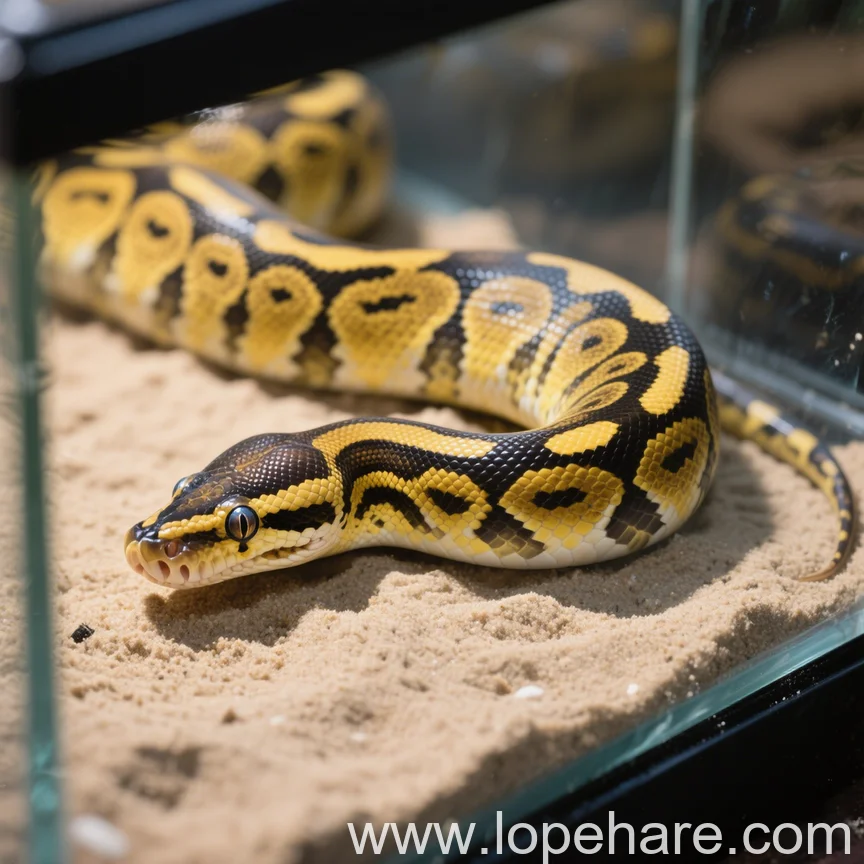
Water Quality and Sources
What kind of water should you provide? Not all water is created equal when it comes to reptiles.
Tap water is the most common source, but it often contains chlorine or chloramines added as disinfectants. While generally safe for humans, these chemicals can potentially be harmful to reptiles over time. Chloramine, in particular, is more stable than chlorine and doesn’t easily dissipate by just letting the water sit. Therefore, it’s recommended to treat tap water to remove these chemicals.
Options for treating tap water include:
- Dechlorination Drops: Reptile-specific water conditioners or drops used for aquariums (ensure they only remove chlorine/chloramines, not heavy metals or other additives) can neutralize these chemicals instantly.
- Leaving Water Out: Leaving water out in an open container for 24-48 hours allows chlorine to dissipate, but this method is ineffective against chloramines.
- Filtered Water: A standard pitcher or faucet filter can often reduce chlorine levels but may not remove chloramines effectively.
- RO (Reverse Osmosis) or Distilled Water: These are pure water sources with minerals removed. While safe from chemicals, using them exclusively might not be ideal long-term as it lacks beneficial minerals. Some keepers mix them with tap water or use mineral supplements, but this adds complexity.
Our Recommendation: At lopehare, we generally recommend using tap water treated with a quality reptile-safe dechlorinator. This is the most practical and reliable method for most keepers.
Avoid using water from softeners which add salts, or untreated well water which could contain harmful bacteria or chemicals not intended for consumption.
Keeping the Water Clean and Safe
Simply providing water isn’t enough; maintaining its cleanliness is paramount. Ball Pythons frequently defecate in their water dishes, and stagnant water can quickly become a breeding ground for bacteria and fungi.
Here’s a cleaning protocol we recommend:
- Daily Check: Inspect the water dish daily for feces, urates, shed skin fragments, or substrate.
- Spot Cleaning: If soiled, immediately remove the dish, discard the water, and clean it.
- Regular Cleaning: Even if the water appears clean, it should be replaced and the dish thoroughly cleaned at least every 2-3 days.
- Disinfection: Simply rinsing with water isn’t enough. Bacteria forms a biofilm. Use a reptile-safe disinfectant regularly. A diluted bleach solution (e.g., 1 part bleach to 30 parts water) is effective, but the dish MUST be rinsed thoroughly afterwards and allowed to air dry completely to ensure no chemical residue remains. Other commercial reptile enclosure disinfectants are also available and effective.
- Dedicated Supplies: Use separate brushes and sponges for cleaning reptile enclosures and dishes that are not used for household cleaning or food preparation.

How Often to Change the Water
Based on the need for cleanliness and bacterial growth potential, how often to change water for a Ball Python depends heavily on how quickly it becomes soiled, but a minimum standard should be adhered to. As mentioned above, ideally, you check daily and change/clean the dish immediately if soiled. Even if it looks clean, changing the water and cleaning the dish every 2-3 days is a good preventative measure against bacterial build-up. This ensures your snake always has access to fresh water for drinking and that the water source isn’t inadvertently contributing to health issues.
Don’t Skip It: Skipping water changes or cleaning can lead to bacterial infections or dehydration, compromising your snake’s health. Consistency is key.
Water Dish and Humidity
As we touched upon, the water dish significantly impacts enclosure humidity. For Ball Pythons, maintaining adequate humidity (50-60% ambient, higher when shedding) is vital for preventing respiratory infections and ensuring smooth sheds. A large enough water dish with a good surface area for evaporation is crucial. You can also consider placing it closer to the heat source (carefully, ensuring water doesn’t get too hot for drinking/soaking) to increase evaporation.
However, relying solely on the water dish might not be enough in drier climates or enclosures with excellent ventilation. You might need to supplement with regular misting or a fogger to achieve target humidity levels, especially during shedding periods. Monitoring humidity with a reliable hygrometer is essential to ensure your method (including the water dish) is sufficient.
Troubleshooting Common Water Issues
- Spilled Water: Ball Pythons can be clumsy. Use a heavy dish and place it on a stable surface, maybe even slightly recessed into the substrate if using a heavy, dry substrate layer underneath to prevent tipping. Clean spills immediately to prevent mold and bacterial growth.
- Defecation in Dish: This is common. Immediate cleaning is the only solution. Some keepers offer a smaller secondary drinking dish that is easier to keep clean, while still providing a large soaking dish.
- Snake Not Drinking: If husbandry is correct (temp, humidity, hides), most snakes drink when they need to. Observing them actively drinking is rare. As long as you provide clean water, assume they are using it. Signs of dehydration (wrinkled scales, retained shed) indicate a husbandry issue that needs investigation beyond just the water dish.
- Water Evaporating Too Quickly/Slowly: Adjust placement relative to heat, consider dish size/surface area, or use additional methods like misting or fogging to regulate humidity.
Providing a safe drinking water source for Ball Pythons is a fundamental part of their care. By understanding their needs and implementing a consistent cleaning routine, you can ensure your Ball Python stays healthy and hydrated.
Conclusion: Essential Hydration
Water is more than just something to drink for your Ball Python; it’s a critical element influencing hydration, humidity, and overall health. Selecting a suitable dish, using appropriate water sources, and committing to a strict cleaning schedule are non-negotiable aspects of responsible Ball Python keeping. While they may not demand the complex environmental precision of, say, a chameleon, attention to detail in fundamental areas like water access and quality is what separates adequate care from excellent care. By prioritizing clean, safe water, you are taking a significant step towards ensuring your Ball Python lives a long, healthy, and comfortable life.
References:
Chloramine. (n.d.). In *Wikipedia*. Retrieved from https://en.wikipedia.org/wiki/Chloramine
